The race for the Premier League title was almost over a few weeks ago when Manchester City lost to Newcastle. A few weeks later, everything looks different. Pep Guardiola’s team are back on top, although they have played one game more than Liverpool. On Sunday, Liverpool hoped that the Citizens could struggle facing Chelsea and Maurizio Sarri.
However, Liverpool were left disappointed. Manchester City demonstrated their attacking strength and effectiveness by destroying Chelsea 6-0 at home. At this point of the season, City look like the most efficient attack in the whole of Europe. Besides Agüero’s miss from about eight yards, Pep Guardiola’s side used more or less every chance.
We have analysed Manchester City multiple times this season and are also uploading an analysis of the game from Chelsea’s point of view. Considering that Pep has experimented less this season I decided to analyse a few details to give you more insights into the strengths of the Citizens.
Lineups
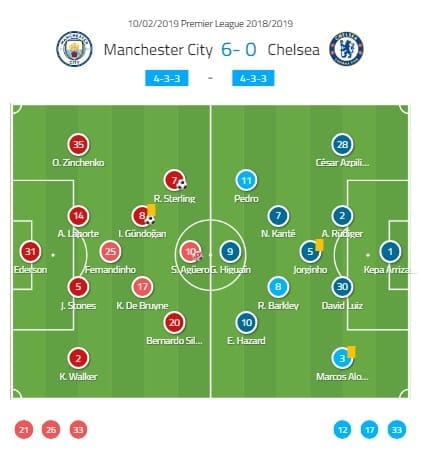
The role of Gündogan
Looking at Guardiola’s teams in Barcelona and especially Munich, you notice that the Catalan coach changed formations and roles more often. At City, he has decided to stick to his 4-1-4-1 most of the time. Although this makes City easier to read before the game, their attacking plays seem to be more consistent.
The challenge for most teams is the line-up Guardiola chooses before every game. Due to their different player types, City’s approach changes along with their players in midfield. Against the high pressing of Chelsea, Guardiola wanted to have an additional player in deeper zones supporting the build-up.
As a consequence, the former Dortmund player often moved deeper and often played next to Fernandinho. With Gündogan and the deeper full-backs, City could create a numerical superiority and overplay the pressing of Chelsea on a regular basis.
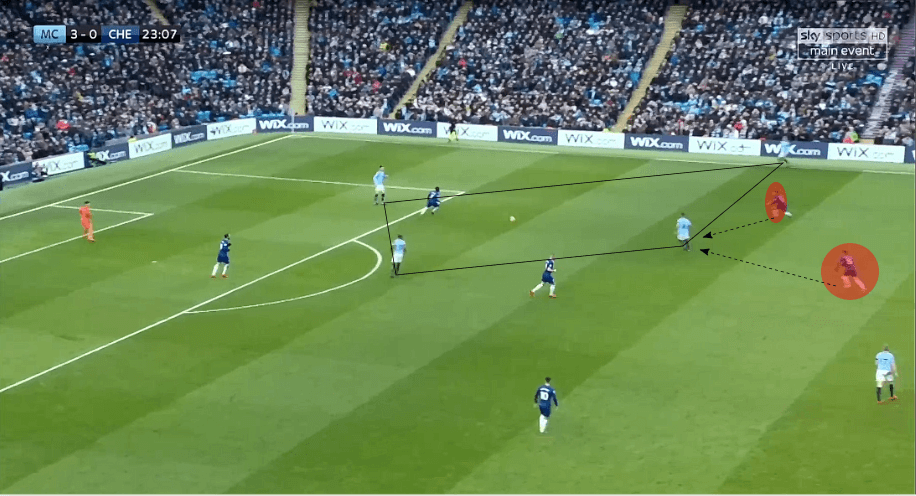
By having Gündogan in the six space, Manchester City could build triangles and diamonds against the pressing of Chelsea. The game intelligence and press resistance of Ilkay Gündogan was again remarkable. Although Kanté tried to press higher, the centre-backs usually had time on the ball because of the additional passing option in the centre.
Furthermore, Jorginho and the other central midfielder staying deeper while Kanté was pressing higher stood out. In the example above they moved out of position to press Gündogan. However, the structure of City gave the German midfielder an immediate passing option on the wing.
With the deeper Gündogan, City attracted Chelsea’s midfielders to press higher. This opened space behind the midfield. Under Guardiola, Manchester City have developed into a real machine in using space efficiently with fast attacks.
Gündogan´s position and the movement of Agüero
However, Gündogan only played next to Fernandinho when Chelsea pressed high. Then he would drop deeper to support. In order to keep the good structure alive, Sergio Agüero moved into the left half-space to provide a passing option high up the pitch. Due to the flat midfield of Chelsea, City could often find the Argentinian striker between the lines.
This was especially true when Gündogan dropped deeper and Kanté pressed the first line. Then, Laporte had a clean passing lane to Agüero who would drop a few metres to take advantage of the stretched defensive shape of the Blues.
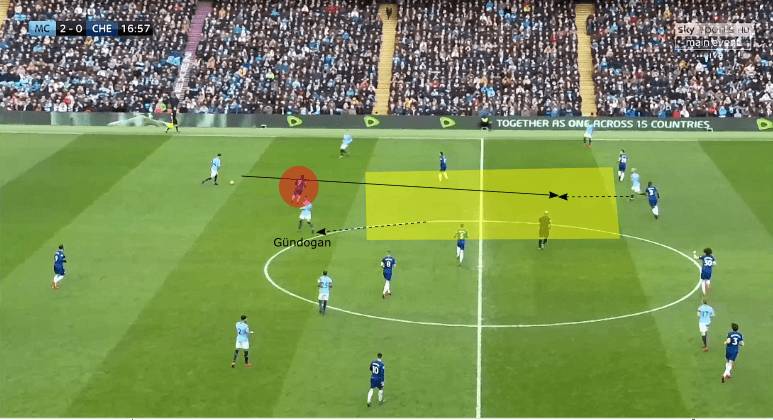
The problems of Chelsea’s flat midfield become obvious in this image. Gündogan dropped into the centre while Kanté tried to press Laporte. Simultaneously, the French midfielder tried to cover Gündogan by using his cover shadow. However, this opened the passing lane to Agüero because no Chelsea player switched quickly enough to cover for Kanté.
As a consequence, Agüero could receive the ball in the open space and quickly turn around. Due to his speed and agility, Manchester City created superiority. Rüdiger could stop Agüero, who dribbled towards Chelsea’s defensive line without getting pressured.
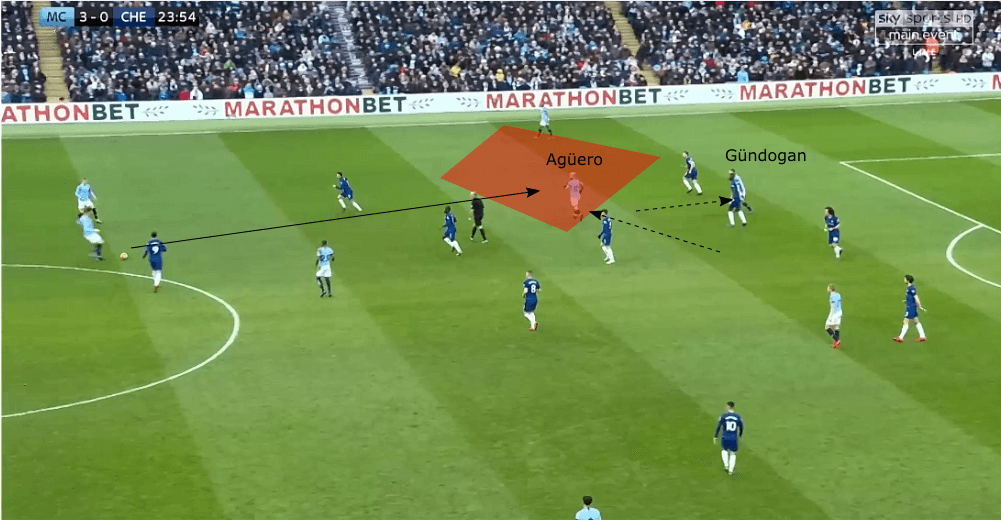
Also in the final third, the movement of Gündogan helped to free up Agüero between the lines. Here, for instance, the midfielder moved higher between full-back and centre-back. Consequently, no could step up to press Agüero who moved out of the centre in the open space. City easily found the free player between the lines due to Chelsea’s lack of compactness.
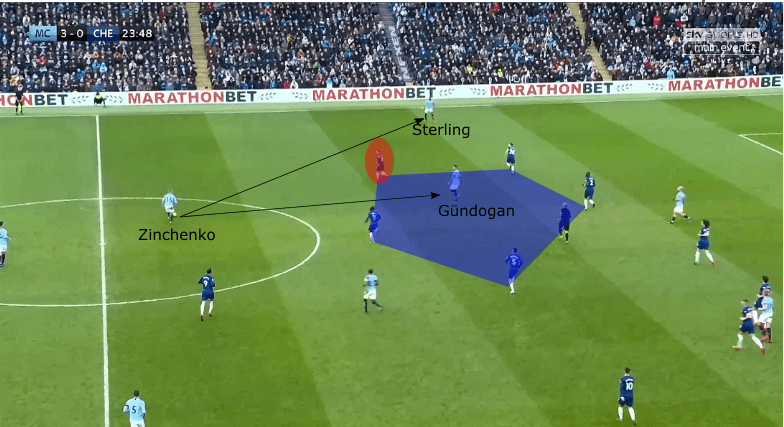
Overall, Gündogan’s positioning between the lines along with Chelsea’s defensive problems created dangerous situations for the Citizens. In the above example, Guardiola’s team switched from the right to the left side. Zinchenko received the ball in the half-space without getting pressured. Gündogan’s positioning was perfect because none of Chelsea´s players could immediately press him.
Furthermore, he created positional superiority for City. Pedro (marked red) either steps outside and closes the passing lane to Sterling, or he covers Gündogan. In this example, Pedro decided to close the passing lane to the English winger. Due to the slow shifting of Chelsea’s central midfielders, Gündogan received the ball between the lines. Again, City could attack out of a comfortable situation.
The intelligent pressing of City
With the appointment of Maurizio Sarri as manager of Chelsea, the Blues have tried to have the ball as well. Building up from the back and overloading one side is an incremental part of their game. Jorginho is the crucial player in their build-up. He dictates the rhythm and speed of Chelsea’s combination play. As a consequence, the main goal of Manchester City was to close him down.
By closing down Jorginho, David Luiz and Antonio Rüdiger received more responsibility during the build-up. Neither are the best in playing the first pass from the back and overplaying a pressing line. Consequently, Manchester City created an advantage for themselves by forcing Chelsea to the wing. But how did they do that?
Against Chelsea, Pep Guardiola adjusted the pressing mechanisms of his team. Starting from their usual 4-1-4-1, the attacking midfielder would move higher in order to press while Fernandinho and the wingers secured the centre.
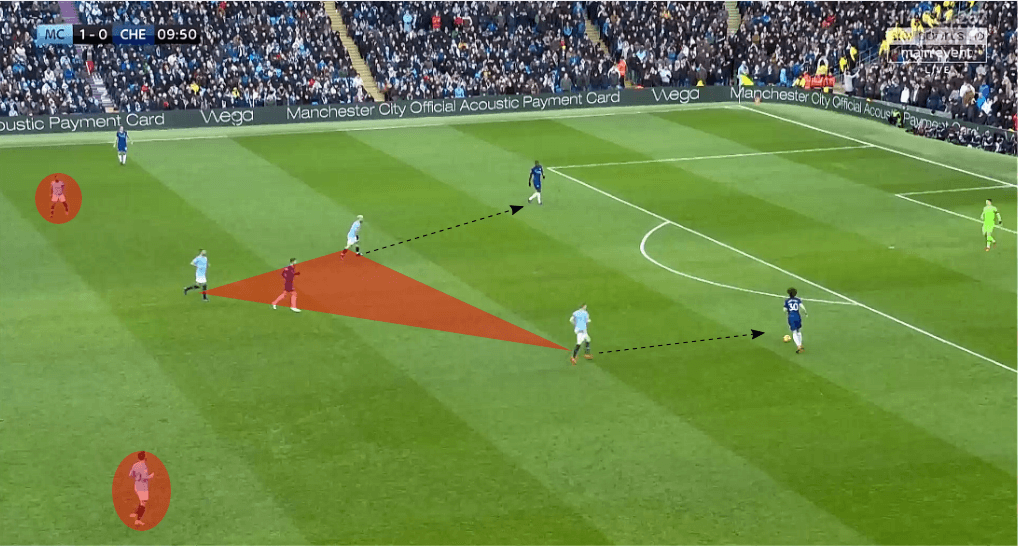
The attacking midfielder close to the ball pressed the centre-back while Agüero closed the passing lane to Jorginho. Additionally, Agüero could close the passing lane between both centre-backs. This forced Chelsea automatically towards the wing. However, Agüero usually closed the passing lane to the Italian midfielder. When the centre-back of Chelsea passed the ball to his partner, Agüero could start pressing him and again force Chelsea to the side.
The far-side attacking midfielder oriented towards Jorginho in order to press him once he received the ball. As a consequence, the Italian midfielder was rarely capable of receiving the ball in an open body position. By only facing his own goal, Chelsea struggled to overplay the pressing of City in the opening minutes.
The advantages of the 4-3-1-2 press
By pushing the attacking midfielder higher than the wingers against the ball, Pep Guardiola combined two advantages. One is the closing down of the defensive midfielders. Both attacking midfielders and the striker are positioned closer together making the centre more compact.
Under Maurizio Sarri the full-backs usually stay deeper. Correctly integrated into the system, this positioning can have benefits because it stretches the pressing scheme of the opponent. However, in the game on Sunday, the full-backs got isolated. The lack of playmaking quality of the full-backs along with the positioning of City’s wingers prevented Chelsea from being able to play diagonally in the centre.
The other advantage of City’s high attacking midfielders was the blocking of the half-space. Chelsea rarely had any options to play through the half-space which is an essential part of their game. The positioning of the Citizens against the ball created always an overload close to the ball along with the possibility to close the passing options in the half-space.
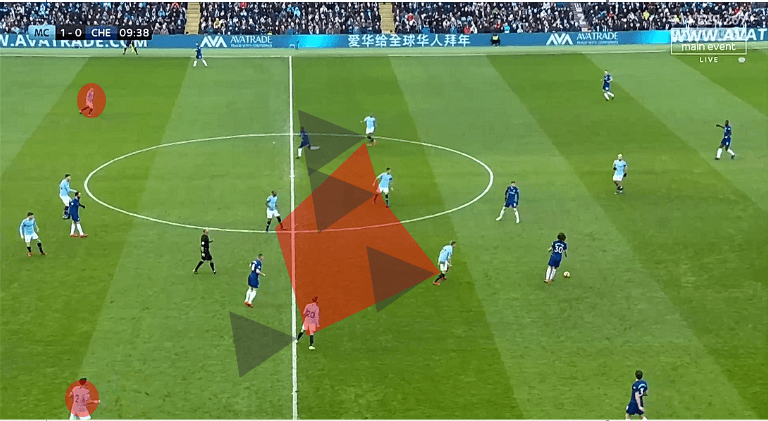
As a consequence of their system, City could apply pressure and simultaneously be compact in the centre of the pitch. Although Guardiola’s team created a compact defensive shape, Chelsea could find a way through the block when they were capable of playing passes in the centre.
Conclusion
It was a demonstration of the strength of Manchester City against Chelsea. Their positional play is on a top level and gives them so many advantages against their opponent. Although they didn’t have that much possession against Chelsea, they were still the dominant team by pressing effectively. Furthermore, their efficiency in front of goal is outstanding, and could be one of the decisive aspects of the race for the Premier League trophy with Liverpool.
If you love tactical analysis, then you’ll love the digital magazines from totalfootballanalysis.com – a guaranteed 100+ pages of pure tactical analysis covering topics from the Premier League, Serie A, La Liga, Bundesliga and many, many more. Pre-order your copy of the February issue for just ₤4.99 here, or even better sign up for a ₤50 annual membership (12 monthly issues plus the annual review) right here.

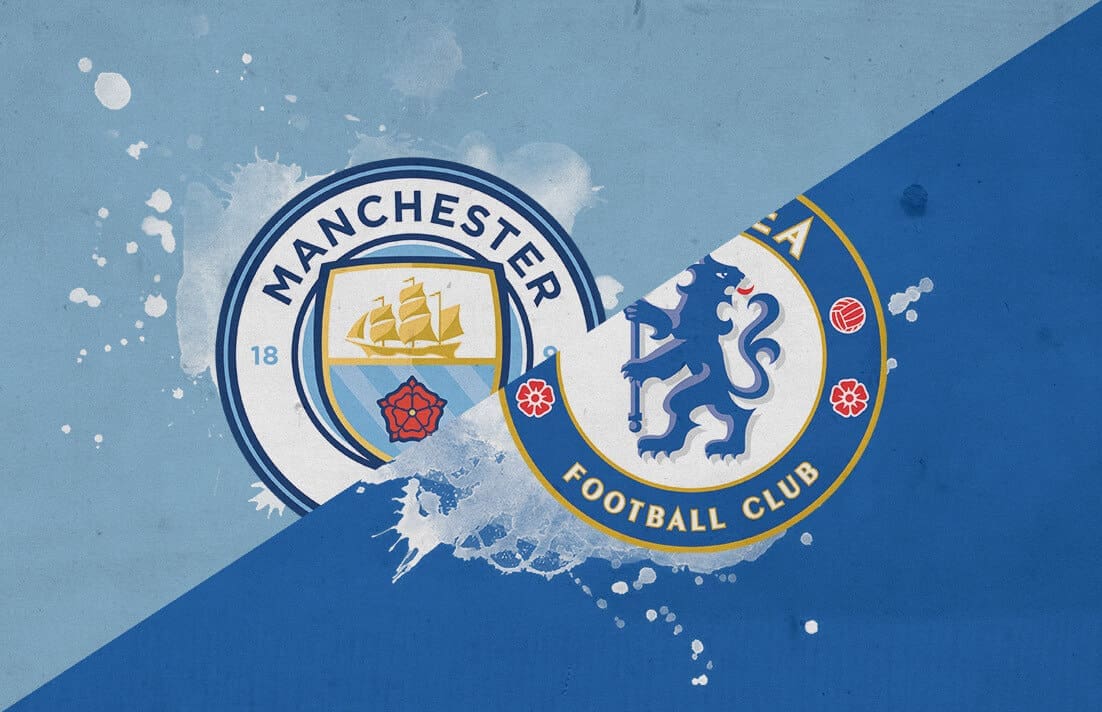



Comments